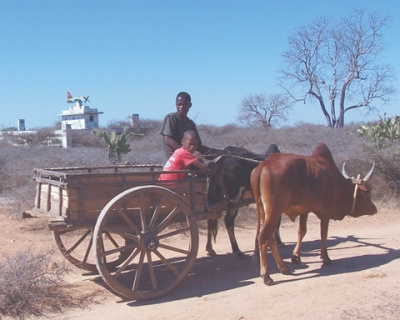
In Madagascar, the line between the living and the dead is not a final boundary but a porous veil. The island nation maintains a relationship with its ancestors that is deeply physical and celebratory, challenging Western conceptions of grief and remembrance. This connection is most vividly expressed in a remarkable ritual known as Famadihana, or “the turning of the bones,” a joyous family reunion with those who have passed on.
The ceremony begins when an ancestor, known as a ‘razana,’ communicates through a dream to a living relative, complaining of being “cold.” This is a sign that it is time to perform Famadihana. The family obtains official permission, opens the ancestral tomb, and carefully brings out the remains. It is a moment not of sorrow, but of profound respect and anticipation for the celebration to come.
The core of the ritual is a vibrant festival. Instead of tears, there is music, dancing, and feasting. The bones are cleaned and wrapped in a fresh silk shroud, the ‘lamba mena.’ Then, in a powerful display of unbroken kinship, family members hoist the wrapped remains onto their shoulders and dance with them, reintroducing them to the community of the living. Crying is ‘fady,’ or taboo, as the event is a celebration of life and family continuity.
These practices are rooted in a belief system where ancestors are not gone but have become powerful intermediaries. They are revered figures who can carry messages to the creator god, Zanahary, and offer protection and guidance to their descendants. The razana are considered active influencers in daily life, akin to patron saints, consulted through dreams on matters from harvests to family disputes.
As described by the late scholar Lyudmila Kartashova, who witnessed a ceremony in 1979, the interaction is intimate and direct. Relatives touch the ancestor’s remains, speaking to them, asking for blessings for children or wealth, and updating them on family and world events. Elders use the occasion to recount genealogies to the younger generation, reinforcing family identity and history.
This casual integration of death into life is visible across the Malagasy landscape. Ornate, carved wooden funerary poles called ‘aloalo’ are a common sight, marking family tombs with scenes from daily life, and have become a national symbol. The pervasiveness of this worldview is perhaps best captured by a small-town guesthouse sign encountered by a traveler: “Hotel Aloalo.” Naming a place of rest for tourists after a funerary monument encapsulates a cultural mindset where the symbols of death are not feared but are an inseparable part of the ongoing tapestry of life.
This unique tradition, however, faces the pressures of modernization and changing economic realities. While the belief in the power of ancestors remains strong, the grand, expensive ceremonies of Famadihana are becoming less frequent, representing a potential fading of one of the world’s most unique expressions of cultural heritage and the enduring bond between generations.
